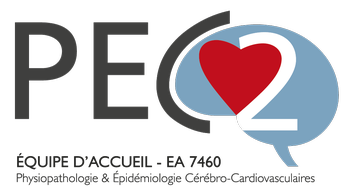How Big Data Informs Us About the Population Health Status : endophthalmitis after ophthalmologic procedures
Comment les Big Data nous informent sur l'état de Santé de la population : les endophtalmies après procédures ophtalmologiques
Résumé
The use of Big Data, in the form of almost exhaustive French medico-administrative databases, has made it possible to address several issues without which this would not have been possible. First, to define the incidence of endophthalmitis after ophthalmologic procedures without bias on specific recruitment modalities of respondents (tertiary centers, questionnaires ...). Thus, local observations of a change in prevalence trends of causative procedures were confirmed at the national level. The reliable description of the incidence of endophthalmitis will then make it possible to identify critical situations of recrudescence of cases. The knowledge of the delay of occurrence after the procedure will allow to adapt the postoperative consultations or information taking in order to alert as soon as possible in case of signs suggestive of an endophthalmitis. Secondly, the existence of an excess risk in the case of IVT of non-prefilled anti-VEGF would not have been possible without the observation of a large number of endophthalmitis, which had not yet been done. The significant reduction of almost 50% in the risk of endophthalmitis with serious consequences with prefilled syringes is to the benefit of the patient. In addition, this study confirms the significant excess risk after corticosteroid injections, requiring particular vigilance and selection of patients treated. Similarly, a discussion with the patient at increased risk of infection requiring corticosteroid treatment could be initiated. Finally, in order to avoid the statistical uncertainty related to the multiple associations of antibiotic prophylaxis after IVT, a national cohort over 10 years, studying more than 5 million IVTs, was necessary. The results show that antibiotic prophylaxis does not reduce the risk of endophthalmitis after IVT and would even increase the risk of endophthalmitis if an antibiotic-corticoid combination is prescribed, which should be avoided.
L'utilisation des Big Data, sous la forme des bases médico-administratives françaises quasi exhaustives, a permis de répondre à plusieurs problématiques sans lesquelles cela n'aurait été possible. Tout d'abord, de définir l'incidence des endophtalmies après procédures ophtalmologiques sans biais sur des modalités de recrutement spécifiques des répondants (centres tertiaires, questionnaires …). Ainsi, les observations locales d'une modification des tendances de prévalence des procédures causales ont été confirmées au niveau national. La description fiable de l'incidence des endophtalmies permettra alors d'identifier des situations critiques de recrudescence de cas. La connaissance du délai de survenue après la procédure permettra d'adapter les consultations, ou prises d'informations, postopératoires afin d'alerter au plus vite en cas de signes évocateurs d'une endophtalmie. Ensuite, l'existence d'un sur risque en cas d'IVT d'anti-VEGF non prérempli n'aurait pas été possible autrement qu'à partir de l'observation d'un nombre important d'endophtalmies, ce qui n'avait encore pas été réalisé. La réduction importante, de quasiment 50%, du risque d'endophtalmie aux conséquences lourdes avec les seringues préremplies est tout au bénéfice du patient. Par ailleurs, cette étude confirme le sur risque important après injections de corticoïdes nécessitant une vigilance particulière et une sélection des patients traités. De même, une discussion avec le patient à risque infectieux augmenté nécessitant un traitement par corticoïdes pourra être engagée. Enfin, pour s'affranchir de l'incertitude statistique liée aux multiples associations d'antibioprophylaxies après IVT, une cohorte nationale sur 10 ans, étudiant plus de 5 millions d'IVT était nécessaire. Il en ressort que l'antibioprophylaxie ne baisse pas le risque d'endophtalmie après IVT et augmenterait même le risque d'endophtalmie en cas de prescription d'une association antibiotique-corticoïde, qui est à proscrire.
Origine : Version validée par le jury (STAR)
